Asics Metaspeed Sky Tokyo review
Asics Metaspeed Sky Tokyo Verdict
The pros
- Lightest Metaspeed Sky to date
- Softer ride than Paris version
- Very stiff carbon plate
- Excellent traction
- Wider toe box
The cons
- Not as stable as predecessors
- $20 price increase
Rating breakdown
Facts / Specs
Size/Fit
Cushioning & ride
Usage
Who should buy the Asics Metaspeed Sky Tokyo ?
If you found the Metaspeed Sky Paris too firm, the Sky Tokyo is slightly softer.
If you don’t need a lot of stability and you don’t need a prominent forefoot rocker, the Sky Tokyo is a good shoe for you.
Who should not buy the Asics Metaspeed Sky Tokyo ?
If you need a stable, supportive ride, the Metaspeed Sky Tokyo will feel too unstable for you.
If you enjoy a soft, squishy ride, it will feel too firm for you.
Asics Metaspeed Sky Tokyo Introduction

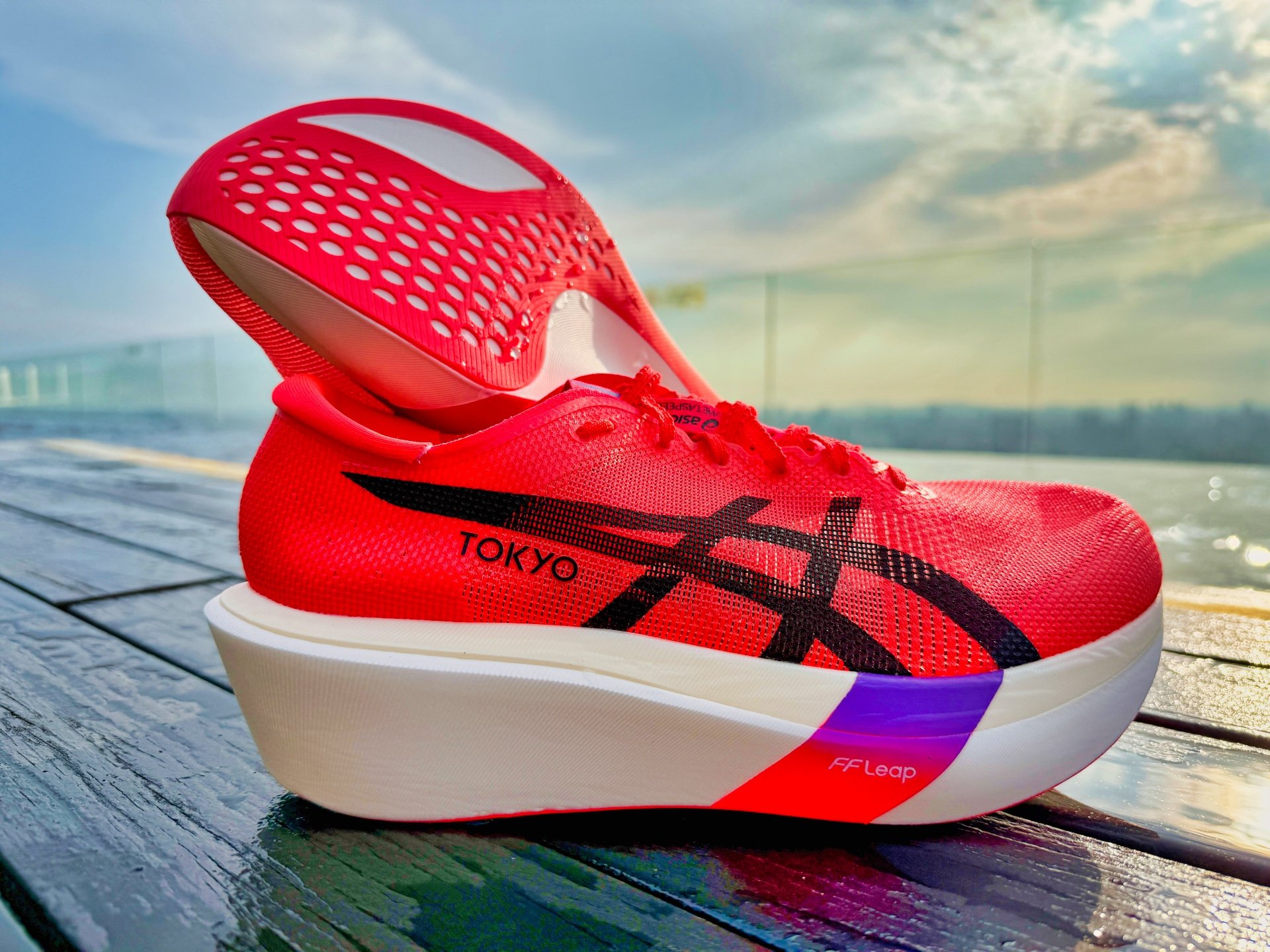
The 2025 World Athletics Championships takes place this year in Tokyo from the 13th September to the 21st September. The World Athletics Championships are normally held every 2 years, typically in odd-numbered years to avoid clashing with the Olympic Games.
ASICS is a major, official partner of the World Athletics Championships- prominent in everything from road closure promotions to volunteer kits. It makes sense that ASICS would want to name their latest version of flagship super shoes after Tokyo, the city which will host the Championships.
The Metaspeed Sky Tokyo is the 4th version of the Metaspeed Sky series and it’s the first version to feature 2 different foams in its midsole. It’s marketed by ASICS as a stride runner’s shoe.
If you’re not sure what a stride runner is, go watch videos of Eilish McColgan. She has long, loping strides with a relaxed cadence. She relies on stride length efficiency over a rapid turnover. She uses the Metaspeed Sky.
I’ve preferred the Metaspeed Edge over the Sky for the last 3 years. I feel that the more prominent forefoot rocker and the steeper plate positioning of the Edge provide more speed assistance.
Both versions have been firm marathon racers without much squish or plushness. You need to have really strong feet and legs to be able to use them for a marathon.
The Metaspeed Sky Tokyo weighs a mere 170 g (6 oz) for a men’s US 9. It’s 13 grams (0.46 oz) lighter than its predecessor with the same stack heights. The price of the Tokyo version is $20 more than the Paris version.
Asics Metaspeed Sky Tokyo First Impressions

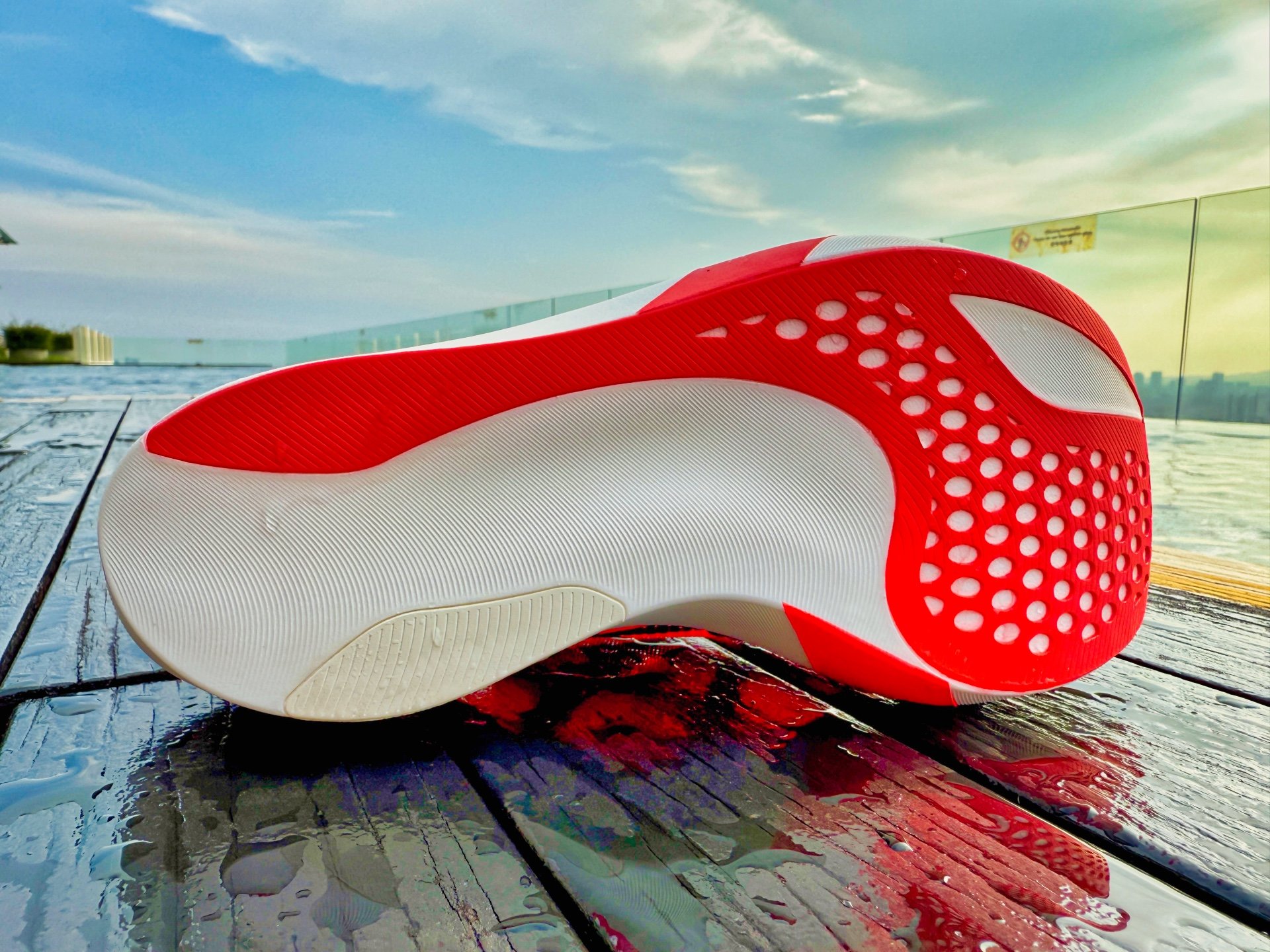
My first run was a 36 kilometre, moderately paced run with some marathon pace strides at the end. I was surprised how firm the ride was considering it has so much squishy FF Leap foam in its midsole.
The other significant thing I noticed was the lower level of stability. The Metaspeed Sky has always been one of the most stable marathon racers due to its firm ride but this version felt wobbly on uneven surfaces and when cornering.
At the end of the 36 kilometres, I was glad the run was finished because the firm ride was a bit harsh on my feet and my ankles felt fatigued.
The positive during that run was that I didn’t feel pressure on my arch like in the previous version. This version felt wider in the midfoot.
Asics Metaspeed Sky Tokyo Upper

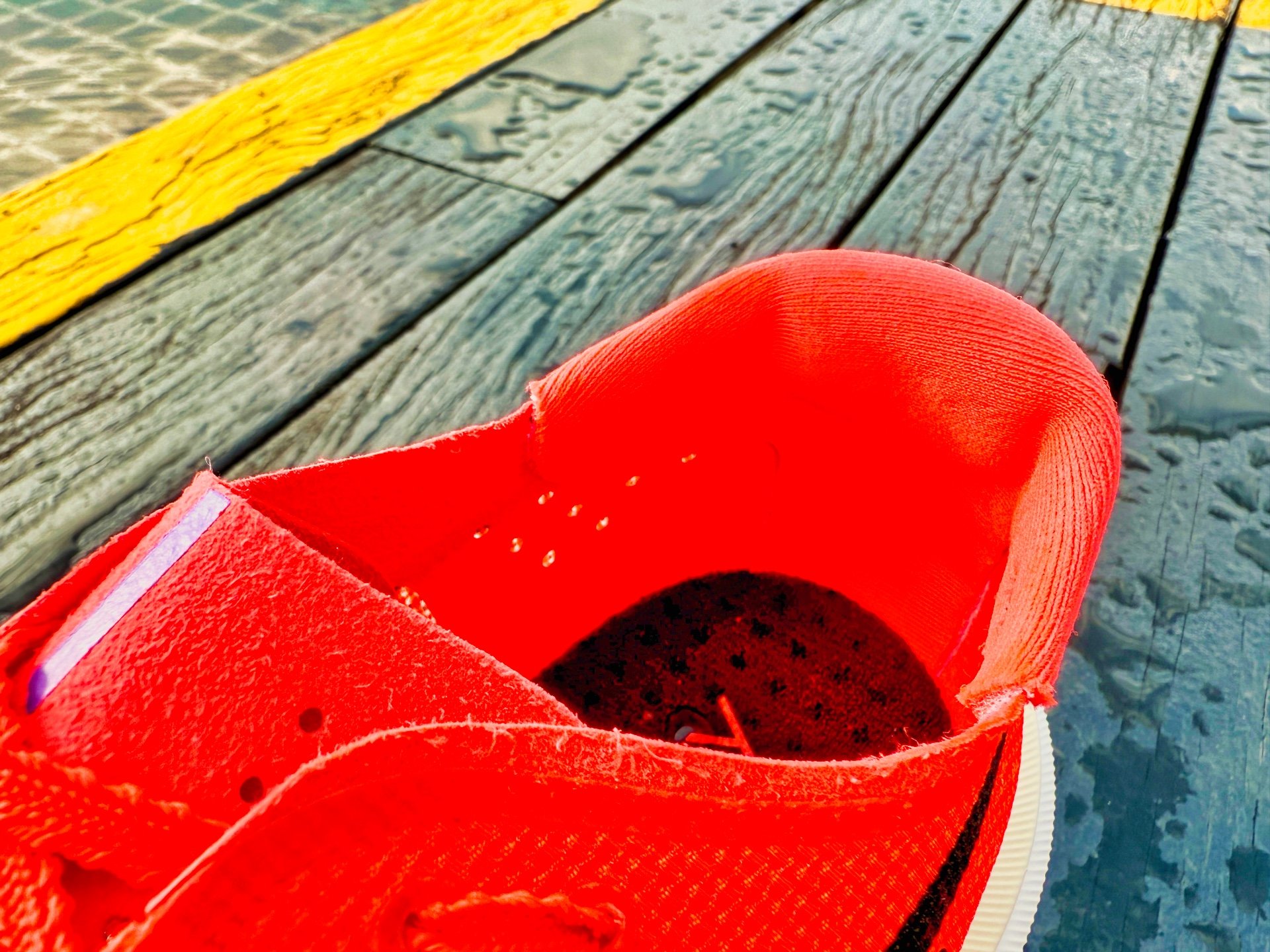
The Sky Tokyo’s upper is relatively similar to the Sky Paris but the big improvement is the fit. The toe box of the Tokyo is wider so you don’t need to go up a half size.
I went true to size and it fit me well. There’s a bit of excess material in the forefoot because I have low-volume feet but it didn’t bother me during runs.
The mesh is thinner and more breathable than the Sky Paris while the heel collar is lightly padded so I find it comfortable around my ankles. I had no issues with foot lockdown.

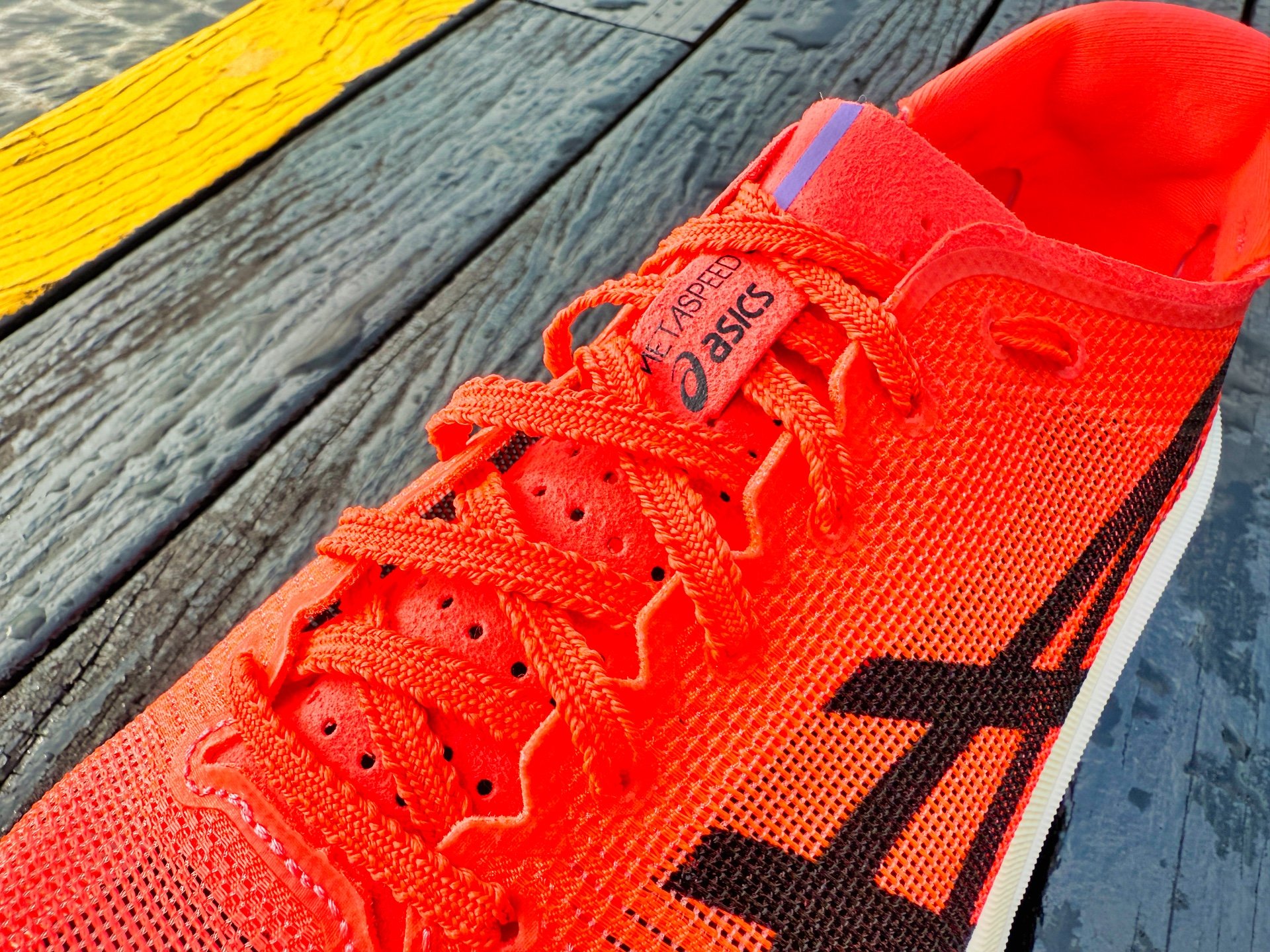
The flat tongue is still not gusseted but there isn’t a significant amount of tongue slide thanks to its wide wings that hold it in place. There are no reflective elements, just like the previous versions.
Asics Metaspeed Sky Tokyo Sole Unit

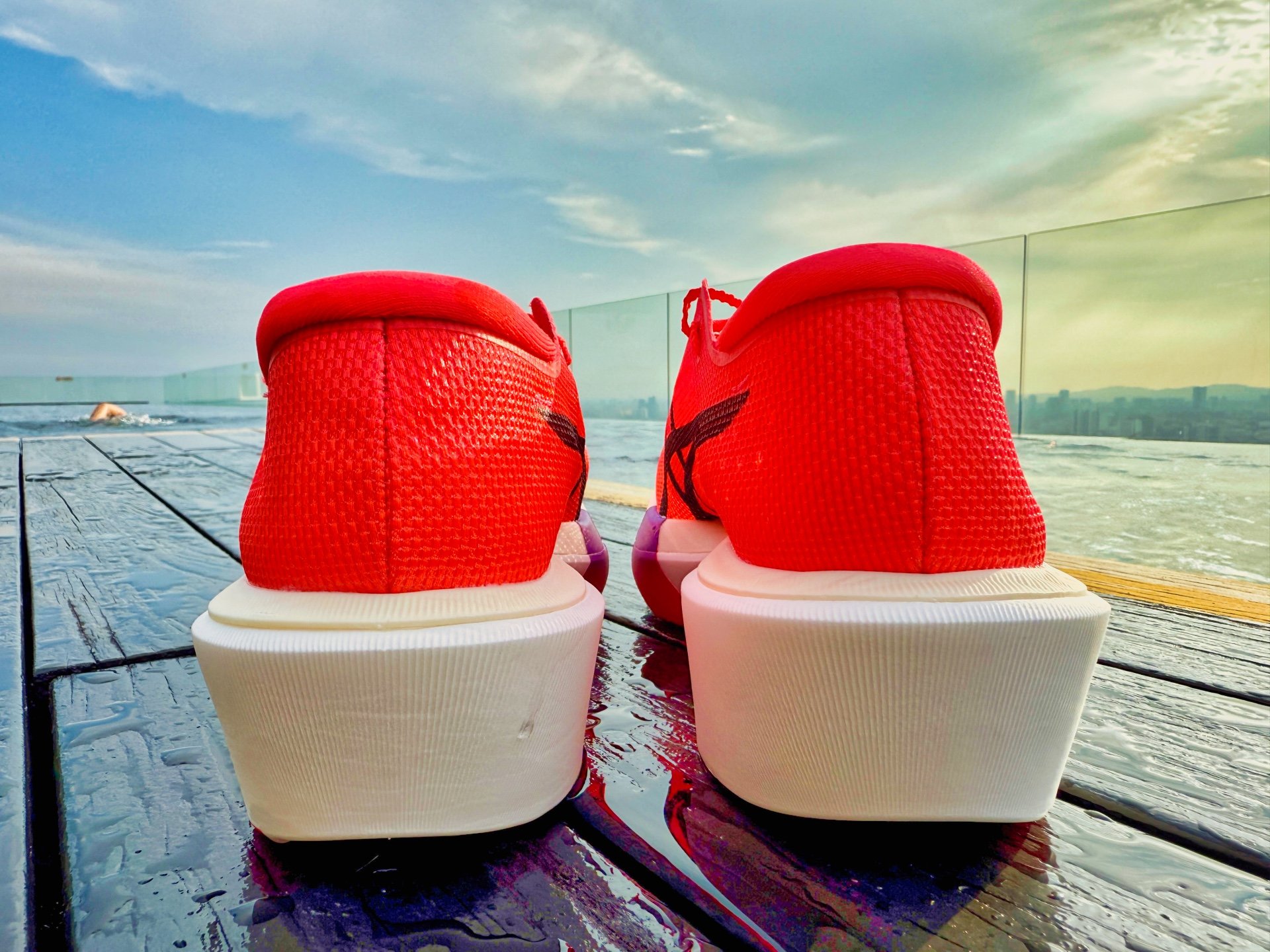
In previous years, the Metaspeed Sky and Edge have had very similar designs with the main difference being the plate positioning. This year, there’s a significant difference in the midsole designs and the Sky gets a larger percentage of brand new FF Leap foam in its midsole.
The Metaspeed Sky Tokyo has a really weird midsole setup. 99% of running shoes have the soft layer on the top with the firmer layer at the bottom. The soft layer provides underfoot comfort and bounce while the firmer layer provides the stable platform.
In the Sky Tokyo, the conventional setup is flipped- your foot sits on top of the firmer FF Blast+ and the soft FF Leap forms the base. It’s like the mattress is on the bottom, and you’re lying on top of the hard bed base.
This setup gives it a firmer ride than most long-distance racers and you aren’t benefiting from the A-TPU FF Leap’s soft properties. It’s much firmer and less squishy than recent racers like the PUMA Fast-R 3, HOKA Rocket X 3, Nike Vaporfly 4 and Adidas Adios Pro 4.
The Sky Tokyo is best suited to fast runs below 4:30 per kilometre (7:15 per m). I recommend it for 5K, 10K and half marathons because it doesn’t possess enough long-distance comfort for marathons- especially if you like soft rides.
The stiff plate and the ultra lightweight build make it easy to pick up the pace but it doesn’t feel like there’s much mechanical assistance. You’ll feel far more speed assistance from the likes of the Alphafly and the Fast-R 3 where your feet sink down into the foam and then the foam bounces you forward.
The stiff carbon plate in the Metaspeed Sky Tokyo doesn’t work as well as it should. The plate has a weaker snap than in previous versions. In this Tokyo version, it’s anchored to a soft base (FF Leap) but previously, FF Turbo and FF Turbo+ provided firmer bases to anchor the plate. I feel like I can’t properly activate the plate in the Sky Tokyo.

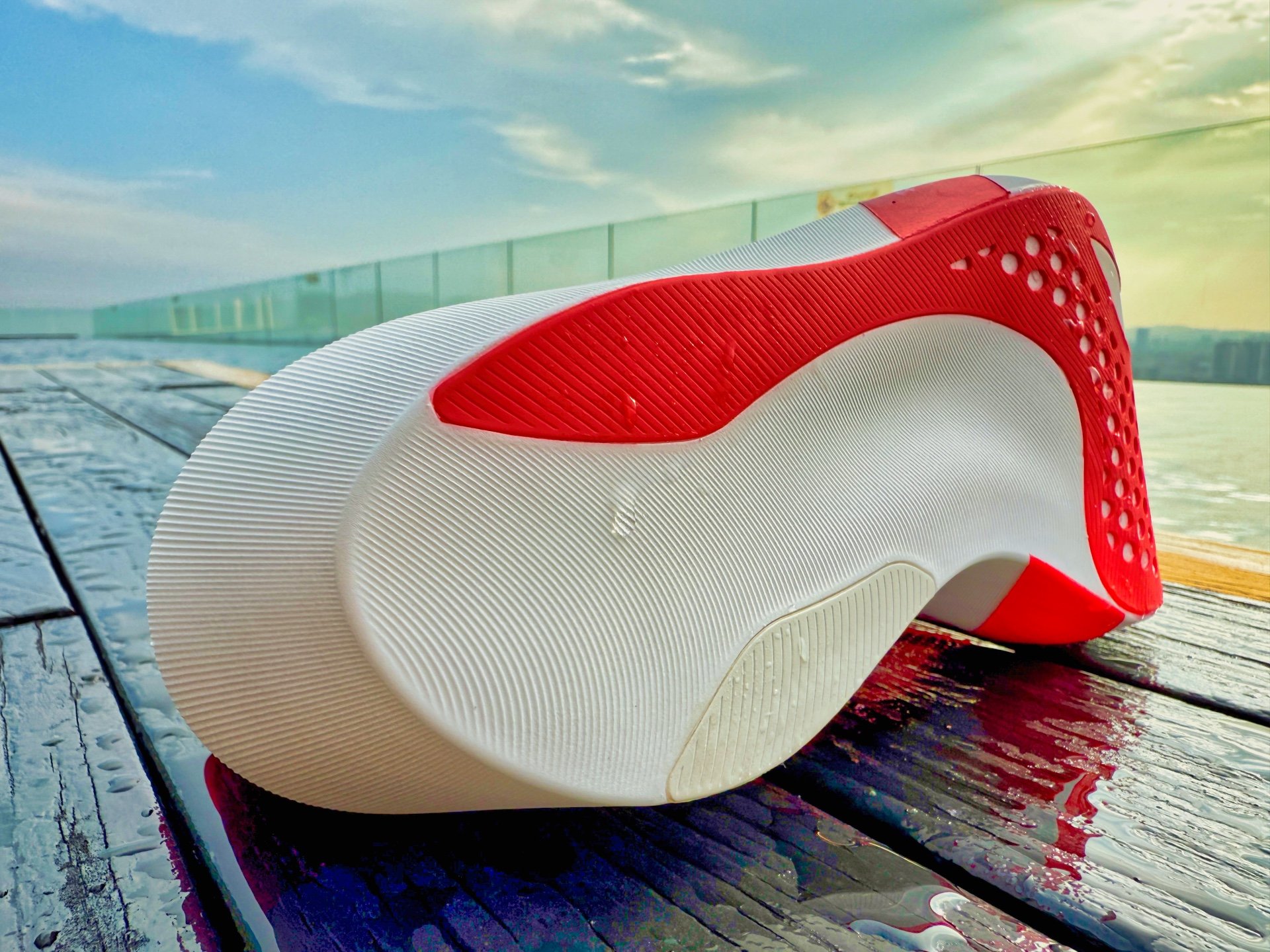
If you need a decent level of stability, the Metaspeed Sky Tokyo will probably feel too unstable for you. The big chunk of soft FF Leap which makes first contact conforms to the ground during footstrikes which puts more pressure on your ankles.
The outsole design is the same as the Metaspeed Sky Paris and traction is excellent. There’s ASICSGRIP covering all the high wear areas but I’ve experienced significant wear at the tip of the heel.
The ASICS racers hold up pretty well over time because their midsoles are not overly squishy so you can get some decent mileage out of the Metaspeed Sky Tokyo. You don’t have to reserve it for only races.
Asics Metaspeed Sky Tokyo Conclusions
The ASICS Metaspeed Sky Tokyo is without a doubt a fast racer thanks to its stiff plate and its lightweight build; however, its ride feels odd. The soft, squishy foam at the bottom just doesn’t make sense because your feet can’t sink down into it. Instead, the carbon plate sinks into it and it makes the springboard snap weaker.


They need to differentiate it from the Edge version but that can be done with the plate positioning like in previous versions. The softer foam needs to be on the top and the supportive base needs to be on the bottom.
While this version is slightly softer, lighter, and has a wider midfoot (that doesn’t irritate my arch), I think the previous version felt faster as it was easier to activate the carbon plate. This version is also a lot less stable. $20 is a significant price rise and I don’t think it’s a better version than the Metaspeed Sky Paris.
When it comes to marathon racers, I prefer a plusher ride with more long-distance comfort and more stability. I haven’t tried the Edge Tokyo yet but I predict it will be a better marathon racer for most runners. It has the soft midsole foam on the top and the firm foam on the bottom.
How does the Metaspeed Sky Tokyo compare?
Why you can trust us
As editorial policy, we do not accept free samples from companies.We purchased this pair of Asics at Running Warehouse with our own money.
This page contains affiliate links. As an Amazon Associate we earn from qualifying purchases. Read more about our policy.
Reviewed by Brandon
Brandon is a South African marathoner based in Malaysia, where the humidity is high and his shoe rotation is even higher. He’s a runner with a full-blown addiction to running shoes. Most people buy shoes to run—Brandon runs to justify buying more shoes. If there’s a new drop, he’s probably already logged 100km in them.
User feedback (2)
Similar shoes to Asics Metaspeed Sky Tokyo

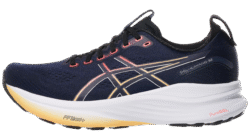
ASICS Gel Kayano 32 Review











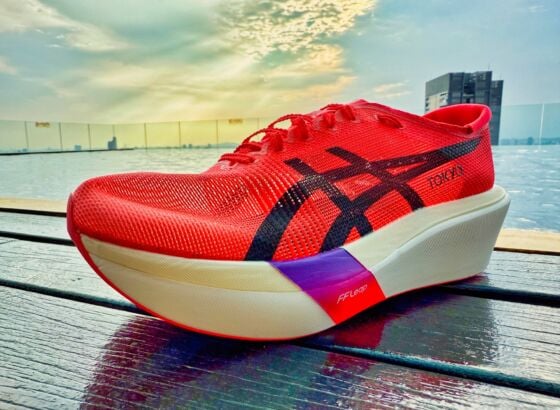
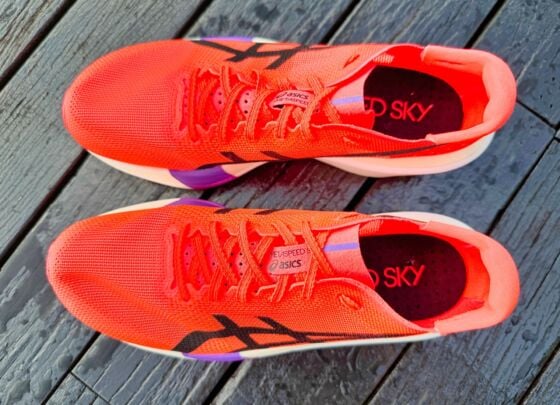

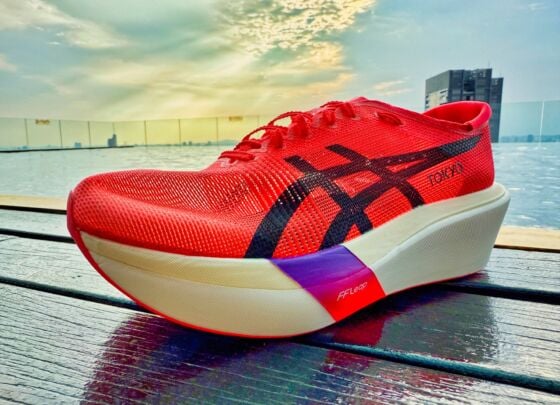






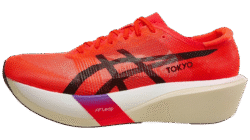


3 months ago
Sky tokyo have same vibes with vaporfly 3 or not? I dont like vf3. Confuse to get sky or edge right now.
3 months ago
Firm lol wtf is wrong with you….
This Shoe is extremly soft…